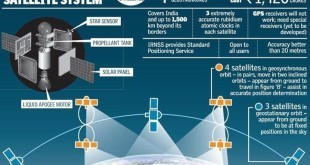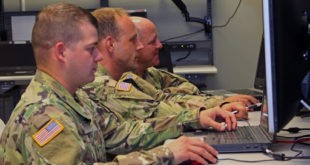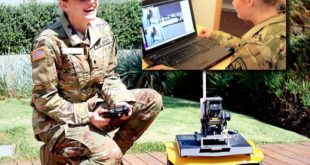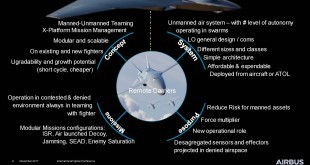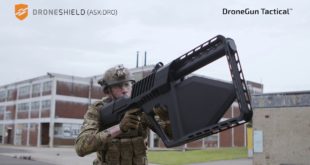Indian Ocean has always been vulnerable to criminals and anti-national activities. The Indian Ocean is an area of conflict. According to a recent analysis of global conflicts by the Heidelberg Institute for International Conflict Research, altogether 42% of world conflicts can be associated with Indian Ocean countries. Numerous cases of the …
Read More »Phased array antennas for phased array radars to satellite constellations to SATCOM On-The-Move (SOTM) on warships
Wireless electronic systems have been relying on dish antennas to send and receive signals. These systems have been widely used where directivity is important and many of those systems work well at a relatively low cost after years of optimization. These dish antennas having a mechanical arm to rotate the …
Read More »The denial of GPS services during Kargil War has driven ISRO to develop Indian Regional Navigation Satellite System (IRNSS), superior to GPS
The Global Positioning System (GPS), is a global navigation satellite system (GNSS) that provides location and time information in all weather conditions, anywhere on or near the Earth where there is an unobstructed line of sight to four or more GPS satellites. Each one transmits information about its position and …
Read More »DARPA V-SPELLS to develop automated tools for understanding, Re-engineering and Assurance of legacy software of Defense and Aerospace systems
The complexity of aerospace and defense software has grown manyfold. For example, the U.S. Air Force F-22 Raptor jet fighter, consists of about 1.7 million lines of software code, while the F-35 joint strike fighter has about 5.7 million lines of code to operate its onboard systems. Boeing’s new 787 …
Read More »Hydrogen Fuel Cell propulsion technology for UAVs and Drones enable quiet, reliable, low-maintenance and long edurance missions operations
UAVs have evolved into increasingly capable platforms deployed for a wide variety of applications. The capability to fight effectively in urban areas against widely dispersed forces, while minimizing collateral damage and achieving information superiority has enabled the UAVs to play a greater role in critical missions. The UAVs have become one …
Read More »US Army’s JUDI is employing Conversational AI to imrpove soldier-robot interaction for Manned-unmanned teaming (MUM-T)
Since fully autonomous UAS are still far off, the US Army has developed concept of Manned-unmanned teaming (MUM-T) for operation in A2/AD environments. Through MUM-T operations they expect to combine the strengths of manned and unmanned platform to increase situational awareness, allowing the armed forces to conduct operations that include …
Read More »US Army developing Manned-Unmanned Teaming ( MUM-T ) technologies in multiple domains for operation in A2/AD environments
US military is facing increasingly Anti-access /Area denial environment, a set of overlapping military capabilities and operations designed to slow the deployment of U.S. forces to a region, reduce the tempo of those forces once there, and deny the freedom of action necessary to achieve military objectives . Unmanned Air …
Read More »US Army xTechSearch competitions developing innovative dual use technologies for next generation military systems
The 2015-2018 U.S. Department of Defense Agency Strategic Plan underscores the criticality of innovation in its strategic goal to “achieve dominant capabilities through innovation, technical excellence, and defense institutional reform.” Echoing this priority, Department of Defense (DoD) leaders frequently point to accelerated innovation across the department as critical to putting …
Read More »DARPA thrust in Terahertz electronics for future military wireless and sensing
The terahertz (THz) frequency band is a fascinating and relatively unexplored part of the larger electromagnetic spectrum (EMS). The terahertz frequency range, lying between electronics and optics (300 to 3000 gigahertz frequencies), can be disruptive force in sectors as diverse as from medical imaging, biological research, pharmaceutical monitoring, manufacturing and quality …
Read More »Rugged, Sensitive Optical Fiber sensors for military sonars and monitoring military assets and earthquakes
The fiber optic sensors also called as optical fiber sensors use optical fiber or sensing element. These Sensors can measure a large variety of parameters, such as temperature, pressure, strain, refractive index, vibrations, displacements, bending, loading, and liquid level or concentration of chemical species. Fiber optic sensors have become a …
Read More » International Defense Security & Technology Your trusted Source for News, Research and Analysis
International Defense Security & Technology Your trusted Source for News, Research and Analysis


